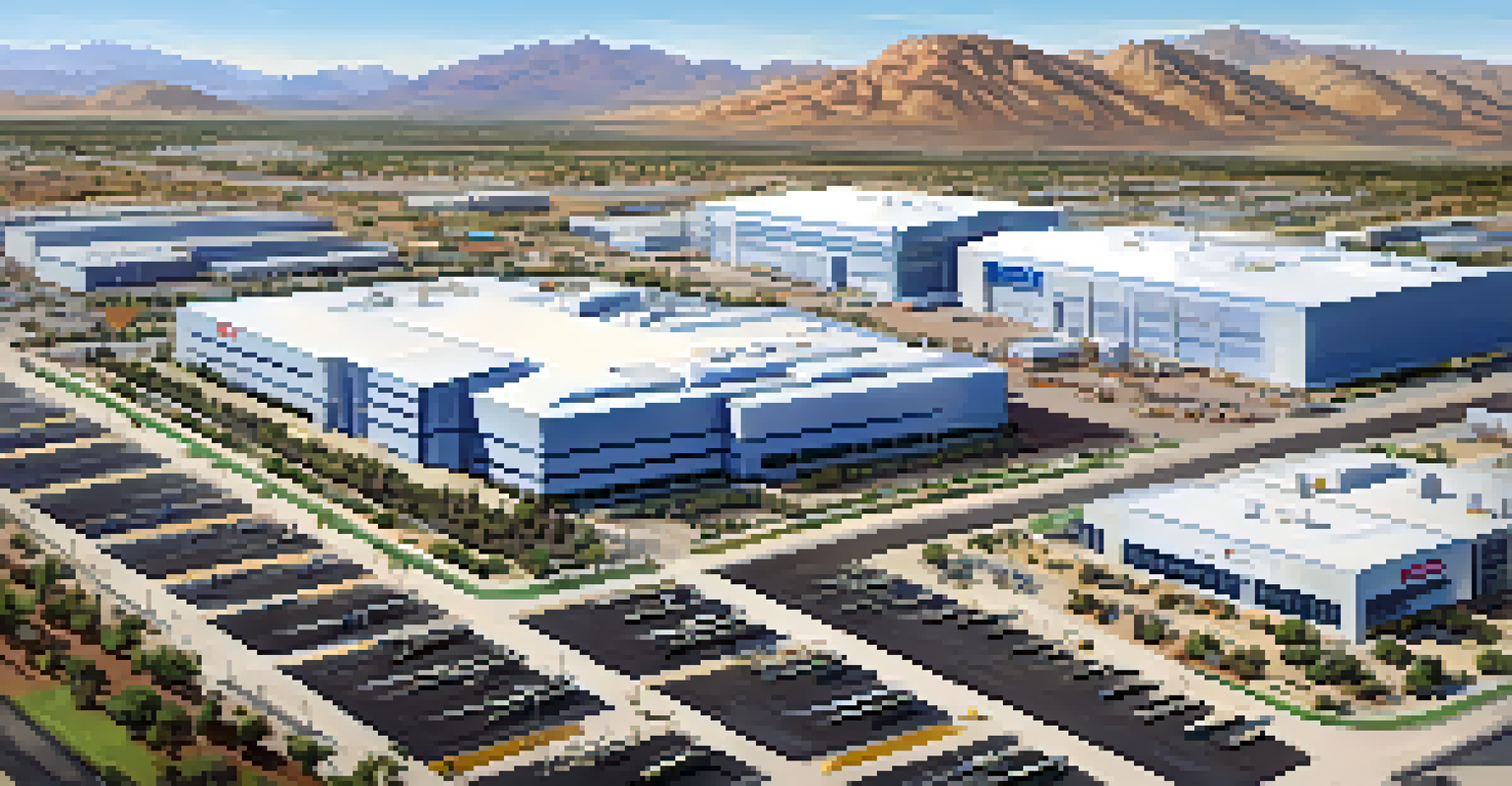Arizona's Influence on Satellite Technology Developments

The Rise of Satellite Technology in Arizona
Arizona has emerged as a significant player in the satellite technology landscape. Its favorable climate and diverse geography provide ideal conditions for testing and developing satellite systems. The state's strong academic institutions and research facilities have also fostered innovations, making it a hub for engineers and scientists.
The future of satellite technology lies in collaboration and innovation, where academia, industry, and government work hand in hand to push the boundaries of what is possible.
In recent years, Arizona has attracted numerous companies specializing in aerospace and satellite technology. Organizations like Honeywell Aerospace and Boeing have established operations in the state, bringing investments and job opportunities. This growth is not just about business; it has created a collaborative environment for tech enthusiasts to thrive.
Additionally, Arizona's strategic location allows for easy access to both domestic and international markets. This accessibility enhances the state's appeal as a center for satellite technology, enabling companies to expand their reach and influence. As a result, Arizona is becoming synonymous with cutting-edge satellite advancements.
Key Institutions Driving Innovation
Several key institutions in Arizona are at the forefront of satellite technology development. The University of Arizona, for instance, boasts the Lunar and Planetary Laboratory, which has conducted groundbreaking research in space exploration. Their work not only contributes to our understanding of the universe but also influences satellite design and functionality.

Similarly, Arizona State University plays a significant role in satellite research through its School of Earth and Space Exploration. The university collaborates with various industries, allowing students and researchers to engage in hands-on projects that lead to real-world innovations. This synergy between academia and industry is crucial for advancing satellite technology.
Arizona: A Satellite Tech Hub
Arizona's favorable climate, strong academic institutions, and strategic location have established it as a key player in the satellite technology landscape.
Moreover, partnerships with government agencies like NASA enhance Arizona's capabilities in satellite research. These collaborations help to secure funding and resources, paving the way for ambitious projects that push the boundaries of what's possible in satellite technology.
Aerospace Companies Making Waves
Arizona is home to a vibrant community of aerospace companies that are revolutionizing satellite technology. Companies like Northrop Grumman and Raytheon Missiles & Defense are leading the charge, focusing on satellite systems that enhance communication and surveillance. Their innovative approaches are critical for national security and global connectivity.
Investing in education and community engagement is key to nurturing the next generation of engineers and scientists who will lead the charge in space exploration.
Startups in Arizona are also making significant contributions to the satellite tech scene. With a focus on miniaturization and affordability, these companies are developing small satellites that can be deployed quickly and efficiently. This shift is democratizing access to satellite technology, allowing more entities to participate in space exploration and communication.
Furthermore, the competitive landscape in Arizona encourages collaboration between established firms and startups. This ecosystem fosters an environment where ideas can flourish, leading to advancements that benefit both commercial and governmental sectors. As a result, Arizona is becoming a breeding ground for innovative satellite solutions.
The Impact of Space Research Programs
Space research programs in Arizona have far-reaching effects on satellite technology development. Initiatives sponsored by organizations like NASA and the National Science Foundation provide critical funding and resources for research projects. These programs often focus on developing advanced satellite systems that can withstand harsh conditions in space.
One notable example is the Arizona Space Grant Consortium, which supports educational programs and research initiatives related to aerospace. By promoting student involvement in satellite projects, the consortium nurtures the next generation of engineers and scientists. This investment in education ensures a continuous pipeline of talent for the industry.
Collaboration Drives Innovation
Partnerships between universities, government agencies, and private companies foster a robust ecosystem that enhances satellite technology development.
Additionally, the outcomes of these research programs often lead to technological breakthroughs that benefit various sectors. From improved communication systems to enhanced weather forecasting, the advancements made in Arizona impact everyday life. This highlights the importance of supporting space research as a means to drive innovation.
Collaborations Shaping the Future
Collaboration is key to the success of satellite technology development in Arizona. Partnerships between universities, government agencies, and private companies create a robust ecosystem for innovation. By pooling resources and expertise, these collaborations lead to more effective research and development efforts.
For instance, the Arizona Technology Council plays a crucial role in fostering connections among industry players. Through networking events and workshops, the council facilitates knowledge sharing and collaboration on satellite projects. This kind of environment encourages creative solutions to complex challenges in satellite technology.
Moreover, these partnerships often extend beyond state borders, allowing Arizona to contribute to national and global satellite initiatives. By working together, Arizona-based entities can tackle larger problems and drive advancements that have a lasting impact on the industry. This collaborative spirit is vital for the future of satellite technology.
Community Engagement and Outreach
Community engagement is an essential aspect of Arizona's influence on satellite technology. Local organizations often host events and workshops to educate the public about satellite science and technology. These initiatives help demystify complex concepts and inspire future generations to explore careers in STEM fields.
Educational outreach programs in schools introduce students to the fundamentals of satellite technology, fostering interest from an early age. By engaging young minds, Arizona is cultivating a workforce that is prepared to tackle the challenges of the future. This investment in education is crucial for sustaining the growth of the satellite industry.
Community Engagement Fuels Growth
Local initiatives and educational outreach programs engage the community, inspiring future generations to pursue careers in STEM and supporting the satellite industry's growth.
Furthermore, public events like satellite launches and exhibitions provide opportunities for the community to witness technological advancements firsthand. These experiences create excitement and curiosity about space exploration, highlighting the importance of satellite technology in our daily lives. Engaging the community is not just beneficial; it’s necessary for the continued success of the industry.
Challenges and Future Directions
While Arizona has made significant strides in satellite technology, challenges remain. Issues such as funding limitations and competition from other states can hinder progress. Additionally, the rapid pace of technological change requires continuous adaptation and innovation to stay ahead.
However, Arizona's strong foundation in research and development positions it well for future advancements. By leveraging its existing resources and fostering collaborations, the state can continue to lead in satellite technology. Emphasizing the importance of education and workforce development is also crucial for maintaining a competitive edge.

Looking ahead, Arizona's focus on sustainability and new technologies will be vital. As the demand for satellite services grows, so does the need for environmentally friendly solutions. By prioritizing innovation that considers ecological impacts, Arizona can shape a future where satellite technology benefits both humanity and the planet.